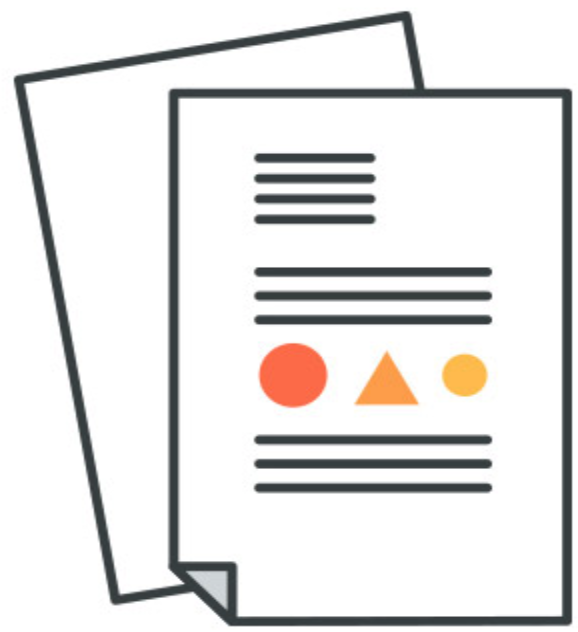A succesful business strategy relies on customer data. Hyper-personalization is the future of CX and to get there, it’s essential to pay attention to customer information and the habits your buyers are revealing to you. According to McKinsey Global Institute…
Data-driven organizations are 23 times more likely to acquire customers, 6 times as likely to retain customers, and 19 times as likely to be profitable as a result.
Gathering customer data and optimizing it to improve overall CX is the cornerstone of driving results. Before we discuss ways to optimize your customer data to improve CX, let’s align on what customer data and customer data management is, types of customer data, and how you can gather customer data ethically.
What is customer data?
Customer data is the personal, behavioral, and demographic information that is gathered by businesses and marketing agencies in order to comprehend, relate to, and interact with consumers. Specifically, this information is data that your customers provide while interacting with your business. It offers valuable feedback from those who have personally used your product or service.

What is customer data management?
Customer data management (CDM) is the ways in which businesses keep track of their customer information. CDM embraces a range of softwares, tools, resources, processes, or cloud computing applications designed to give speedy and efficient access to customer data.
The purpose of CDM is to transform customer data into comprehensive customer profiles that sales and marketing teams may use to enhance customer interactions. Organizations are then able to use communications that increase customer engagement and retention by having a deeper understanding of their consumers’ demands.
How can gathering customer data improve CX?
Collecting customer data is important and highly beneficial for a number of reasons. Customer feedback provides insights on how you’re performing, allowing you to identify any problems and fix them before they damage your reputation. Diving into customer insights reveals product desires that can give you ideas for new launches, or even update current products for improvement.
Overall, taking a closer look at customer data assists in understanding how you can raise service standards and enhance the entire customer experience by tailoring your marketing to more effectively target your niche. According to G2…
63% of buyers report that the best brands exceed expectations throughout the customer journey.
To outshine competition and make your CX stand out, customer data is the key to get ahead of the game now and predict market trends for the future.

Best practices for gathering ethical customer data
Customer data ethics focuses on aligning business practices with moral and ethical policies that reflect a company’s values. Collecting customer data ethically, safely, and legally ensures that an organization uses associated technologies in accordance with all applicable rules and regulations. Principles for data ethics are as follows…
1. Ownership. An individual always has ownership over their personal information.
2. Consent. Customer data should not be shared without a user’s consent. An independently offered indication of a person’s interest through a statement or affirmative action qualifies as consent around personal data so long as there is an option to withdraw consent.
3. Security. Customer data should always be secure.
4. Disclosure. Customers should be informed about who is collecting their data.
5. Access. Customers should be allowed to acces their data and make corrections to any inaccurate data.
6. Transparency. Customers have a right to know how you plan to collect, store, and use their information.
7. Intention. Before gathering data, consider why you need it, what you’ll gain from it, and what changes you’ll be able to make to improve CX.
8. Timely. Customer data should not be stored any longer than is necessary.
By focusing on what is meaningful and important to customers, you can create a customer data strategy that improves overall CX and makes the customer journey a much more pleasant experience for consumers.

Types of customer data
There are many data collection points and a myriad of information opportunities along the buyer journey. For ease of understanding, let’s break them down into categories.
1. Personally Identifiable Information (PII)is any data that could potentially identify a specific individual. Examples of this data include full name, physical address, email address, login information, or phone number.
2. Non-Personally Identifiable Information (non-PII) is the opposite of PII, which is anonymous information and can’t be used to identify any one person. It includes things like IP address, cookies, or device IDs.
3. Engagement data tells you how your customers interact with your brand via various marketing avenues. Web or mobile interactions, social media or email engagement, customer service information, or paid ad engagement fall under this category.
4. Behavioral data helps you discover hidden trends that your consumers share during the purchasing process. You can gather this data through transactions, product usage, and qualitative data.
5. Attitudinal data allows companies and product teams to measure and understand the effect their brand, product, and customer experiences have on customers and target market. It reveals customer feelings, motivations, and opinions toward a product, brand, or customer experience.

You should be gathering customer data
In order to get CX right, businesses require CRM/CX platforms that are able to recognize the same consumer across numerous touchpoints and mix integrated data from internal and external systems. Some of the simplest ways to collect data are through:
- Surveys
- Newsletter and blog subscriptions
- Promotions, giveaways, and offers
- Customer orders
- Transaction history
- Web-tracking
- Marketing analytics
- Social media
- Referral source
Keeping your customer data organized is a difficult task, and you may need to merge data sources into one for optimal results. Using various platforms to gather customer data is ideal to avoid siloing your information to only one group of your audience.
If you are looking for information regarding a newly released product, instead of just sending out an email survey, ask for feedback on social media, look to online reviews, track your transactions and compare to previous product releases.

5 tips to use data to elevate CX
Now that you have your customer data, what can you do with it? There are a myriad of ways to improve CX by making the most of the customer information you’ve gathered. Let’s roll through some tips!
1. Anticipate customer needs
By tracking the avenues that lead customers to your product such as website, social media channels, or email campaigns, it can help you be proactive in what your customers need. If you see more customers switching to mobile wallets to make payments, you might add more options for customers to check out using mobile in preparation for that need.
Anticipating customer needs is about stopping future problems to continue growth and to predict what your customers may want in the future. For example, in upcoming peak seasons, how can you analyze previous data to work out the kinks and optimize user experience?
2. Personalize CX
Nowadays, most businesses are chasing CX personalization on a granular level. With customer data you can cater to your audience through highly targeted ads, loyalty programs, segmented email campaigns, or product recommendations that you know they’ll enjoy. Consumers don’t just want personalization, they demand it. Personalizing customer experience increases sales and engagement by showing customers more of what they’ll like and raises customer retention, as customers feel they are being listened to and understood.
3. Improve processes
Pouring over customer data may reveal patterns in your operation that multiple customers are having roadblocks with. Even if this issue is something small or uncommon, it’s still worthwhile to optimize it. However, if this is a problem that is out of your hands (think: postal service as an example), but you’re receiving complaints about it, consider implementing a follow up email that explains why a package takes a certain amount of time to ship. Whatever kinks there are in a system, processes can be improved with transparency or by keeping the customer’s benefit in mind.
4. Upgrade customer support
Customers will be brutally honest with you and will oftentimes tell you what’s wrong. This customer feedback is absolutely vital to listen to and implement. If a problem continues, you may lose customers forever who could even tell others not to support you. Getting to know your customers and their needs on a deeper level reveals what they expect from you and how you can give it to them. Maybe they want chat support or the ability to phone in for immediate questions. Whatever customer feedback you receive, you can utilize it to your full advantage in improving customer support.
5. Offer value
Reviewing customer data may reveal obvious flaws that need attention, but there are also things that may not need to be fixed, only improved. Each business is different and if something could be better for your customers, they’ll tell you. At the same time, it’s not their job to analyze every minute aspect of a business. That’s when it’s time to look over all of the information you’ve gathered and simply ask…”How can I make this more valuable for my customers?” If you don’t have that kind of data, consider asking for it. It can only benefit you and the customer experience.
Elevate CX with Influx
We strive to enhance the customer journey through outsourced support. We offer a variety of different services including eCommerce support, live chat or call support, technical support, sales teams on demand, and more. Our diverse range of services allows your business to flex and scale as needed with an extra layer of support. Accomplish your CX goals with Influx.

